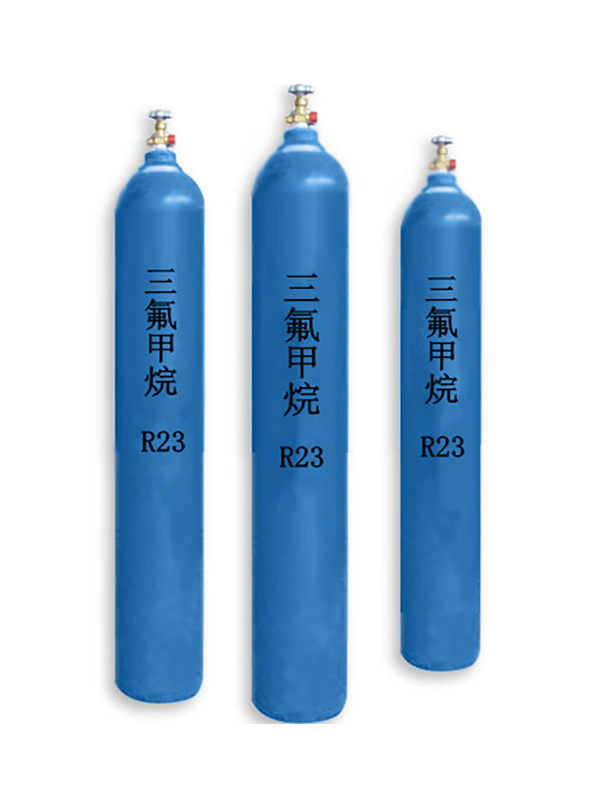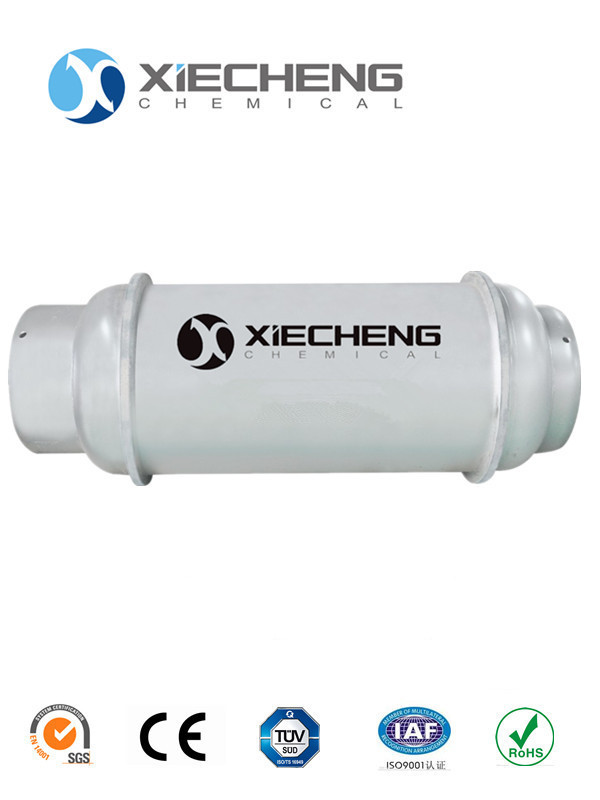
Packaging Specifications: This product is packaged in 200-liter iron drums (250kg/drum)
Physicochemical Properties
Physical Properties
Appearance and properties: Colorless, transparent, heavy liquid, very volatile, with a special odor.
Melting point (℃): -63.5
Relative density (water=1): 1.50
Boiling point (℃): 61.3
Relative vapor density (air=1): 4.12
Molecular formula: CHCl3
Molecular weight: 119.39
Saturated vapor pressure (kPa): 13.33 (10.4℃)
Critical temperature (℃): 263.4
Critical pressure (MPa): 5.47
Logarithm of octanol/water partition coefficient: 1.97
Gradually oxidized to highly toxic phosgene in air under light irradiation; therefore, it needs to be stored in a sealed brown bottle. 1% ethanol is usually added to destroy the phosgene that may be generated. It is not easily combustible. Under the action of light, it can be oxidized by oxygen in the air to hydrogen chloride and highly toxic phosgene. It is the easiest to hydrolyze into formic acid and HCl in chloromethane, with poor stability. It undergoes thermal decomposition above 450℃ and can be further chlorinated to CCl4.
Action and Use
Organic synthesis raw materials, mainly used to produce Freon (F-21, F-22, F-23), dyes and medicines. In medicine, it is often used as an anesthetic. It can be used as a solvent and extractant for antibiotics, spices, oils, resins, and rubber. It can be mixed with carbon tetrachloride to produce a non-freezing fire-resistant liquid. It is also used in smoke agent propellants, grain fumigants, and standard liquids for calibrating temperature. Industrial products usually contain a small amount of ethanol, so that the phosgene generated reacts with ethanol to generate non-toxic diethyl carbonate. Before using industrial products, a small amount of concentrated sulfuric acid can be added, shaken, and then washed with water. After drying with calcium chloride or potassium carbonate, chloroform without ethanol can be obtained.
Precautions for Use
Hazard Overview
Health hazards: It mainly acts on the central nervous system, has an anesthetic effect, and damages the heart, liver, and kidneys. Acute poisoning: Inhalation or skin absorption can cause acute poisoning. In the initial stage, there are symptoms such as headache, dizziness, nausea, vomiting, excitement, warm and moist skin, and mucosal irritation. Later, there are mental disorders, shallow breathing, loss of reflexes, coma, etc., and severe cases may develop respiratory paralysis and ventricular fibrillation. At the same time, there may be liver and kidney damage. In case of accidental ingestion, there is a burning sensation in the stomach, accompanied by nausea, vomiting, abdominal pain, and diarrhea. Anesthesia symptoms then appear. The liquid can cause dermatitis, eczema, and even skin burns. Chronic effects: mainly cause liver damage, and there are symptoms such as indigestion, fatigue, headache, insomnia, etc., and a few have kidney damage and chloroform addiction.
Environmental hazards: It is harmful to the environment and can pollute water bodies.
Flammability and explosiveness: This product is non-combustible, toxic, a suspected carcinogen, and has irritating properties.
Emergency First Aid Measures
Skin contact: Immediately remove contaminated clothing and rinse thoroughly with plenty of running water for at least 15 minutes. Seek medical attention.
Eye contact: Immediately lift the eyelids and rinse thoroughly with plenty of running water or saline for at least 15 minutes. Seek medical attention.
Inhalation: Quickly remove from the scene to a place with fresh air. Keep the airway open. If breathing is difficult, give oxygen. If breathing stops, immediately perform artificial respiration. Seek medical attention.
Ingestion: Drink plenty of warm water and induce vomiting. Seek medical attention.
Fire Fighting Measures
Hazardous properties: It can produce highly toxic phosgene when in contact with open flames or hot objects. Under the action of air, water, and light, the acidity increases, thus having strong corrosiveness to metals.
Harmful combustion products: Hydrogen chloride, phosgene.
Fire fighting methods: Firefighters must wear filter respirators (full face masks) or isolation respirators, wear full fire and protective suits, and extinguish the fire from the upwind side.
Extinguishing agents: Fog water, carbon dioxide, sand.
Emergency Response to Spills
Emergency response: Quickly evacuate personnel from the spill-contaminated area to a safe area and isolate it, strictly limiting entry and exit. It is recommended that emergency responders wear self-contained positive-pressure respirators and protective suits. Do not directly contact the spilled material. Cut off the leak source as much as possible.
Small spills: Absorb with sand, vermiculite, or other inert materials.
Large spills: Build a dike or dig a pit for containment. Cover with foam to reduce vapor hazards. Transfer to a tank truck or special collector with a pump for recycling or transport to a waste disposal site for disposal.
Handling and Storage
Operational precautions: Closed operation, local ventilation. Operators must be specially trained and strictly abide by the operating procedures. It is recommended that operators wear direct-reading respirators (half masks), chemical safety goggles, anti-toxic and anti-permeation work clothes, and anti-chemical gloves. Prevent vapor leakage into the workplace air. Avoid contact with alkalis and aluminum. Handle with care during transportation to prevent damage to packaging and containers. Equip leakage emergency treatment equipment. Empty containers may contain harmful substances.
Storage precautions: Store in a cool and ventilated warehouse. Keep away from fire and heat sources. The warehouse temperature should not exceed 30℃, and the relative humidity should not exceed 80%. Keep the container sealed. It should be stored separately from alkalis, aluminum, and edible chemicals, and should not be mixed. The storage area should be equipped with leakage emergency treatment equipment and suitable containment materials.
Keywords
Previous
Next

Trichloromethane
Contact Information
Product Categories
Inquire Now
If you are interested in our products, please leave your email address, and we will contact you as soon as possible, thank you!









